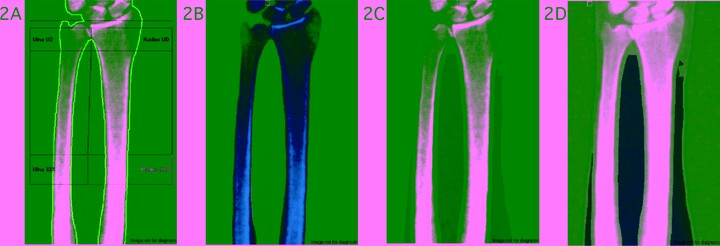Positioner and clothing artifact can affect one-third radius bone mineral density measurement

Abstract
This report identifies a radius dual-energy X-ray absorptiometry (DXA) confounder and technical approach to avoid this inaccuracy. Initially, a precision study revealed substantial differences (p<0.001) in radius bone mineral density (BMD) least significant change ranging from 0.038 to 0.073g/cm(2) between 3 technologists that each performed assessments in 30 men and 30 women. Subsequently, visual examination of all 360 forearm DXA images, including bone, soft tissue, neutral, and air point-typing was performed. Errors in automated ‘soft tissue’ identification were observed; compared with the manufacturer’s ideal depiction, suboptimal soft tissue point-typing was present in 30/360 scans (8.3%) involving 27 individuals. These point-typing deviations appeared to result from inclusion of forearm positioner slots at the scan field edges or clothing covering the forearm. Twenty-four individuals had a paired scan appropriately point-typed, thus allowing evaluation of the effect on BMD measurement. In those with incorrect point-typing associated with positioner slots, the mean one-third radius BMD was ∼7% higher. In conclusion, positioner slots at the edges of the distal scan field can lead to automated soft tissue identification inaccuracies and consequent erroneous one-third radius BMD measurement. DXA technologists should avoid slot inclusion in forearm scans and evaluate point-typing as part of routine analysis.